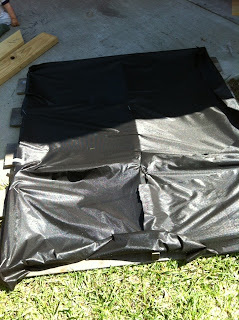I am a pretty stubborn person, and I love to cook. When I noticed prices steadily and dramatically climbing on the foods we loved, I was determined to find a way to eat the same foods without suffering financially. I never found coupons useful because they are often for processed foods. Plus I have NO patience for coupons. So this is the first of (hopefully many) posts on resourcefully shopping for healthy and/or organic products. Warning: it does require quite a bit of effort, and multiple grocery store trips throughout the week, but if you are a foodie and eating healthfully/organically is important to you, it will be well worth your while. And once you slide it into your routine, it becomes much more manageable. Do routine things routinely and your productivity will improve, as will your quality of life. I don't want to get on a soap box, I just wanted to share what works for me and hope that it works for others out there too!
So here are a few tips/things I do that go against the grain of main-stream thought, but work for me.
1) I always buy what I can on sale. If it's meat, I buy a bunch and freeze it. If it is produce, I buy it and make sure I plan to use it either the same night, or within the next couple days. If it is produce like spinach, you can even freeze it and use it in smoothies.
2) I go shopping and buy the produce/products that are on sale/in season and plan my meals around that. The less expensive the produce, the better it is because it is in season! If it is a special occasion, or I feel like experimenting, I don't plan a meal I have no ingredients for. (Spices or vinegars are an exception. I will go out and buy a spice if I need it for a recipe. )
3) As much as I love to, I don't do all of my shopping at specialty stores like Whole Foods (great stock to possibly invest in btw, google it NYSE:WFM). I go to a variety of stores, as they always have their different sales or specials. Most grocery stores also have an "Organic Aisle/Section" that is great. It also prevents me from going nuts/being overwheled by all the delicious choices! If there is a particular or weird ingredient I need, I will try and shop locally or even on the internet.
4) I subscribe to a more European school of thought and grocery shop probably 4 or more times a week. To help make this routine, I usually stop by on my way home from work. They are not long trips, and often I go for the express purpose of perusing the organic aisle to see if anything is on sale. Kroger has these awesome "Managers Specials" where they mark down items to at least 50% off. Some version of Organic Yogurt is always on sale. So I buy a couple containers at a time instead of a whole weeks or two weeks worth. It's great for variety too :). Often, the smaller organic milks go on sale because people most commonly buy the Gallon. Publix almost always has a BOGO.

5) I buy produce when I can from Farmers Markets. Their produce is always pretty competitively priced, especially for the quantity you buy, and it is always in season.
6) If there is a non-perishable, very versatile, and/or freezable item on mega sale I buy in bulk. An example here would be nuts. Sometimes they go on sale for as much as 75%-90% off and you can use them SO many ways: plain, as flour, ground into nut butters, dressings, smoothies etc. And they refrigerate and freeze for forever.
7) I almost never throw any food away. If it is a fruit or a vegetable and it looks like it might go bad soon and I won't have time to cook it, I will either chop it up and freeze it, or puree it and freeze it. (I learned this after making and storing my son's babyfood.) For example, if it is zucchini, I puree it and freeze it and might use it for zucchini bread. Bananas I definitely slize and freeze. Bananas are awesome, you can re-purpose them in SO many ways; in bread, as a natural sweetener, in oatmeal, in smoothies, pancakes, smothered in chocolate or peanut butter. I will buy old bananas on sale just to cut them up and freeze them. You can pretty much puree and freeze any fruit or vegetable. If you absolutely cannot think of any way to repurpose some of them, they make great, flavorful additions to soups, broths or sauces!
Like I said, this method of shopping requires a bit of time and effort, but if you think about it, it takes up the same amount of time, it's just more spread out. I never spend more than 20-30 minutes in the grocery store and my bills are almost never more than $50. I remember as a kid going on marathon trips to the grocery store that lasted for hours and resulted in 3 figure bills routinely.
Another reason I enjoy this style of shopping/cooking is that I am not an inherently creative person. My creativity is born of either necessity or resourcefulness. This kind of lifestyle forces creativity and it is really fun and exciting for me to explore so many new ways of doing different things.









